马дёҠжіЁеҶҢпјҢз»“дәӨжӣҙеӨҡеҘҪеҸӢпјҢдә«з”ЁжӣҙеӨҡеҠҹиғҪпјҢи®©дҪ иҪ»жқҫзҺ©иҪ¬зӨҫеҢәгҖӮ
жӮЁйңҖиҰҒ зҷ»еҪ• жүҚеҸҜд»ҘдёӢиҪҪжҲ–жҹҘзңӢпјҢжІЎжңүиҙҰеҸ·пјҹжіЁеҶҢ


×
дёҠеӣҫзҡ„第дёүдёӘе°ұжҳҜиӮүйЈҹзүӣйҫҷпјҡ
aIC Internal carotid artery mPSTp m. pseudotemporalis profundus aMN Mandibular artery mPSTs m. pseudotemporalis superficialis asp ascending process of pterygoid mPTd m. pterygoideus dorsalis aST stapedial artery mPTv m. pterygoideus ventralis cot cotyle n,aIM internal mandibular nerve and artery cr crest nCID nerve to constrictor internus dorsalis muscles ect ectopterygoid pal palatine ept epipterygoid pt pterygoid lig ligament qj quadratojugal ls laterosphenoid; qu quadrate mAMEM m. adductor mandibulae externus medialis ri rictus mAMEP m. adductor mandibulae externus profundus sh surangular shelf mAMES m. adductor mandibulae externus superficialis tcr tensor crest mAMP m. adductor mandibulae posterior V1 ophthalmic nerve mDM m. depressor mandibulae V2 maxillary nerve mLPt m. levator pterygoideus V3 maxillary nerve mPPt m. protractor pterygoideus VIIhy hyomandibular ramus of facial nerve VIIpal palatine ramus of facial nerve
еҶҚиЎҘе……дёҖеј пјҡ
еӣҫзүҮйҮҢйқўиҝһйңёзҺӢйҫҷMOR 008зҡ„йғҪжңү
Osteological correlates of the mandible. Scale bar equals 1cm. A, Thescelosaurus (ROM 3587; left, lateral view); B, Edmontosaurus (CMN 2289; right, medial view); C, indet. hadrosaur (ROM 1949; left, lateral view);D, Leptoceratops (CMN 8889; left, lateral view); E, Centrosaurus (ROM 767; left, lateral view); F, Stegosaurus(CM 41681; right, medial view); G, Panoplosaurus (ROM 1215; right, medial view); H, Plateosaurus (AMNH 6810; right, medial view); I, Camarasaurus (CM 11378; right, medial view); J, Dromaeosaurus (AMNH 5356; left, lateral view); K, Tyrannosaurus (MOR 008, right, medial view); L, Caenognathus (ROM 8776; left, lateral view).
Fig. 5. Muscle attachments, trigeminal nerves, and arteries of the braincases of select dinosaurs in left, lateral view. A, Triceratops; B, Brachylophosaurus; C, Tyrannosaurus
жҘјдёҠ第дёҖз« еӣҫзүҮзҡ„жңҖдёӢйқўзҡ„CеҸ·пјҢе°ұжҳҜйңёзҺӢйҫҷпјҢbraincaseжҺҘиҝһйўҢйӘЁиӮҢиӮүпјҢзҘһз»Ҹе’ҢеҠЁи„ү
C, Nanotyrannus: right, conservative, ventral mandibular attachment of m. pterygoideus ventralis; left, osteological correlates suggest a jugal attachment of the muscle; D, Soft-tissue anatomy of the medial portion of the mandible of the theropod Tyrannosaurus.
дёӢйқўзҡ„еӣҫзүҮеә•дёӢзҡ„CжҳҜNanotyrannusпјҢDжҳҜйңёзҺӢйҫҷ.
зҺ°еңЁзңӢзңӢи„ҶејұејӮзү№йҫҷ; и„ҶејұејӮзү№йҫҷзҡ„е’¬еҗҲеҠӣи®Ўз®—жқҘд№Ӣж Үжң¬MOR 693пјҢеӨ§иүҫе°”пјҢжҳҜдёҖдёӘдәҡжҲҗе№ҙдёӘдҪ“
a, Lateral view. b, Dorsal view. aof, antorbital fenestra; co, occipital condyle; ec, ectopterygoid; en, external naris; fr, frontal; j, jugal; lac, lacrimal; ltf, lower temporal fenestra; m, maxilla; mf, maxillary fenestra; n, nasal; or, orbit; pal, palatine; par, parietal; pfr, prefrontal; pm, premaxilla; po, postorbital; popr, paraoccipital process; ps, parasphenoid; pt, pterygoid; q, quadrate; qj, quadratojugal; soc, supraoccipital; sq, squamosal; stf, supratemporal fenestra. Scale bar, 10 cm. c, Meshed finite element model of Allosaurus fragilis in oblique view. d, Meshed finite element model in lateral view. Black stars, position of constraint; thick black arrows, line and direction of muscular force; thinner black arrows and 'bite', point of bite force; grey arrow, line and direction of condylar force; cond, point of condylar force; M.ap (F1), M. adductor posterior; M.ame (F2), M. adductor mandibulae externus superficialis, medius, profundus and M. pseudotemporalis; M.pt (F3), M. pterygoideus group;d1, moment arm of muscle F1; d2, moment arm of muscle F2; d3, moment arm of muscle F3.
дәҡжҲҗе№ҙејӮзү№йҫҷзҡ„еӨҙйӘЁжҜ”жҲҗе№ҙдёӘдҪ“зӢӯзӘ„пјӣдёӢеӣҫжҳҜжҲҗе№ҙејӮзү№йҫҷзҡ„еӨҙйӘЁпјҢиҝҳжңүдёҖеј жҲ‘жӢҚж‘„зҫҺеӣҪеҚҡзү©йҰҶеӣӣжҘјжҲҗе№ҙејӮзү№йҫҷзҡ„еӣҫзүҮпјҢжҳҜжҜ”иҫғе®Ҫзҡ„
Stress distribution and vector plots for the skull of Allosaurus fragilis during a
maximum impact bite without adductor muscle contraction (mode D).
a, Stress distribution and magnitude plot for principal stress 1, lateral view. Colour scale bar indicates areas of high tension or compression. b, Stress distribution and magnitude plot for principal stress 3, lateral view. See colour scale bar for areas of high tension or compression. c, Stylized plot showing stress vector direction, lateral view. d, Stylized stress vector plot, dorsal view.
[size=0.83em]2010-9-8 23:55 дёҠдј
дёӢиҪҪйҷ„件 [size=0.83em](33.21 KB)
|
|
RayfiledеҸӘи®Ўз®—дәҶJaw Adductorзҡ„еҜ№дәҡжҲҗе№ҙејӮзү№йҫҷзҡ„дҪңз”ЁпјҢзңӢ2жҘјеҸҜд»ҘеҸ‘зҺ°Jaw adductorзҡ„иҷҪ然жҳҜдё»еҠӣд№ӢдёҖдҪҶ并дёҚжҳҜжҸҗдҫӣе’¬еҗҲеҠӣзҡ„е”ҜдёҖиӮҢиӮүпјҡ
еҒҮи®ҫејӮзү№йҫҷжҳҜжё©иЎҖпјҢйӮЈд№ҲJaw adductorпјӣиЎЁж ј1пјҲ第дәҢз« еӣҫпјүпјҢејӮзү№йҫҷзҡ„еҲҶеёғеҲҶеҲ«еңЁе·ҰеҸідёҠйўҢйӘЁзҡ„第3.4.5еҸ·е…ұ6йў—зүҷйҪҝзҡ„йқҷжҖҒе’¬еҗҲеҠӣ 2147.88NпјҢжң«з«Ҝе·ҰеҸіеҸҢзүҷйқҷжҖҒе’¬еҗҲеҠӣ3572.56NпјҢеӨ§жҰӮжҜ”зӢ®еӯҗжң«з«Ҝе·ҰеҸіеҸҢиҮјйҪҝзҡ„йқҷжҖҒе’¬еҠӣе°ҸпјҢдҪҶжҳҜжҜ”зӢ®иҷҺзҠ¬йҪҝпјҲеӨ§дёӘдҪ“еӨ§зәҰ2000N)зҡ„йқҷжҖҒе’¬еҠӣеӨ§гҖӮ
еҒҮи®ҫеңЁжңүиӮҢиӮүеҸҚдҪңз”Ёе’Ңй«ҒйӘЁйҷҗеҲ¶зҡ„жғ…еҶөдёӢпјҢеӨҙйӘЁе®үе…ЁжүҝеҸ—е’¬еҠӣ18747NпјҢеңЁе®Ңе…ЁжІЎжңүйҷҗеҲ¶зҡ„жғ…еҶөдёӢе’¬еҗҲеҠӣеҸҜиҫҫ55447N,еҪ“然иҝҷдёӘж•°жҚ®жІЎжңүж„Ҹд№үгҖӮ
еңЁжңүжңүиӮҢиӮүеҸҚдҪңз”Ёе’Ңй«ҒйӘЁйҷҗеҲ¶зҡ„жғ…еҶөдёӢпјҢдәҡжҲҗе№ҙејӮзү№йҫҷеҸҜиғҪеҸҜд»Ҙдҫқйқ йўҲйғЁиҫ…еҠ©иӮҢиӮүзҡ„еҠӣйҮҸиҫҫеҲ°жӣҙй«ҳзҡ„еҠЁжҖҒе’¬еҠӣпјҢжҲ–иҖ…зӣҙжҺҘз”ЁеӨҙйғЁеҶІж’һеҜ№ж–№пјҢе’¬зҡ„ж—¶еҖҷжҠҠйғЁеҲҶдҪ“йҮҚе’ҢеҶІеҮ»еҠӣеёҰе…ҘпјҲclashing biteпјүзҡ„жғ…еҶөдёӢеҸҜд»ҘиҫҫеҲ°18747Nзҡ„е’¬еҠӣгҖӮ
иҝҷдёӘжүҚжҳҜиӮүйЈҹзүӣйҫҷзҡ„еӨҙйӘЁ
|
|


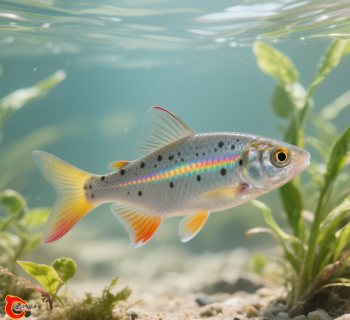 вҖңж–‘йІ‘и„ӮйІӨеұһпјҲSalmmaculosusпјүвҖқ98 дәәж°”#еӨ§жқӮзғ©
вҖңж–‘йІ‘и„ӮйІӨеұһпјҲSalmmaculosusпјүвҖқ98 дәәж°”#еӨ§жқӮзғ©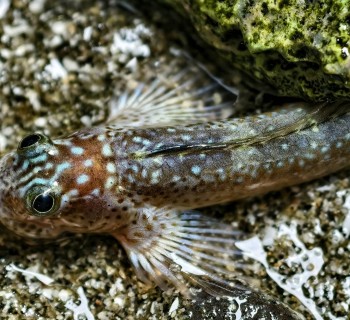 еҸ‘еҸ‘жңҖиҝ‘е…»зҡ„йұј194 дәәж°”#еӨ§жқӮзғ©
еҸ‘еҸ‘жңҖиҝ‘е…»зҡ„йұј194 дәәж°”#еӨ§жқӮзғ©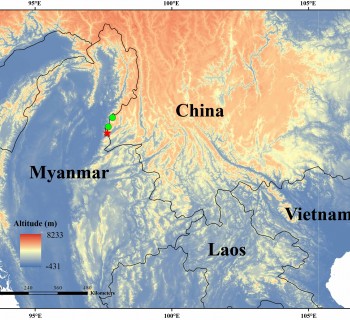 2025е№ҙй«ҳй»ҺиҙЎеұұ第4дёӘж–°з§ҚвҖ”вҖ”й“ңеЈҒе…іи§’иҹҫ XenophrysВ tongbiguanensis96 дәәж°”#дёӨж –
2025е№ҙй«ҳй»ҺиҙЎеұұ第4дёӘж–°з§ҚвҖ”вҖ”й“ңеЈҒе…іи§’иҹҫ XenophrysВ tongbiguanensis96 дәәж°”#дёӨж –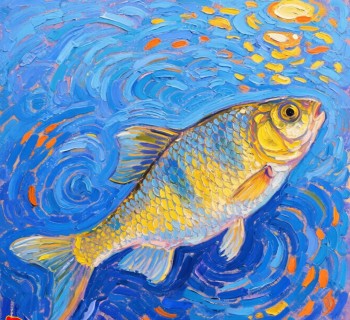 иұҶеҢ…AIпјҡжўөй«ҳйЈҺз”»дҪң0 дәәж°”#з”ҹжҖҒз”»жқҝ
иұҶеҢ…AIпјҡжўөй«ҳйЈҺз”»дҪң0 дәәж°”#з”ҹжҖҒз”»жқҝ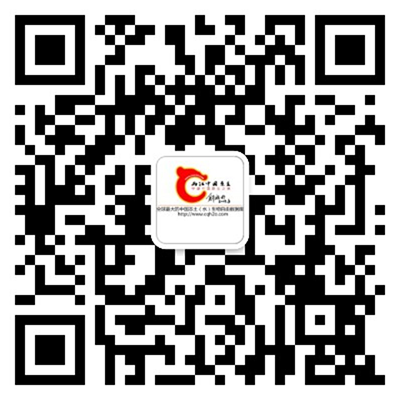 дёӨжұҹеёҰдҪ зңӢеҺҹз”ҹ
дёӨжұҹеёҰдҪ зңӢеҺҹз”ҹ дёӨжұҹзҪ‘з«ҷзҫӨ
дёӨжұҹзҪ‘з«ҷзҫӨ